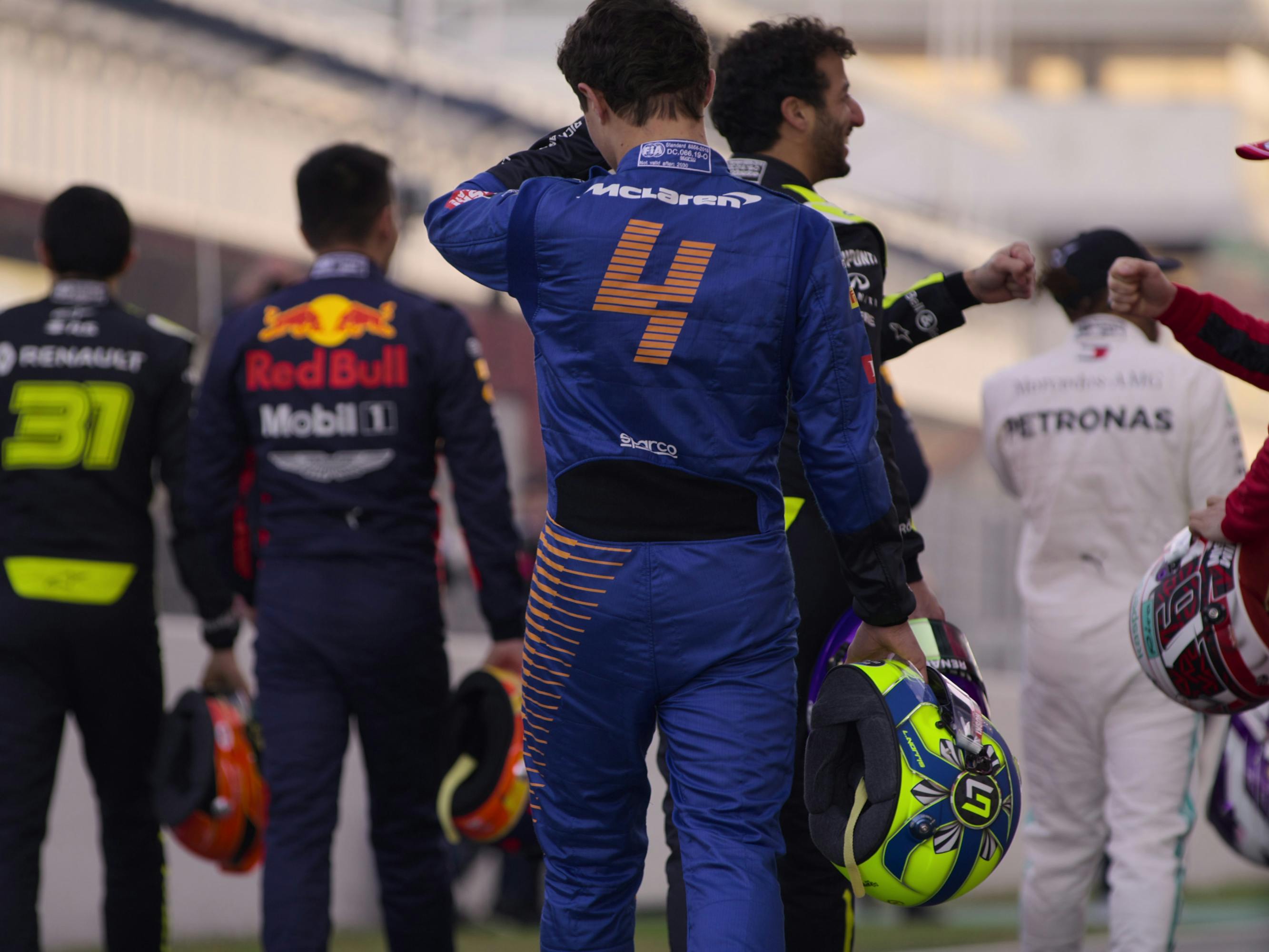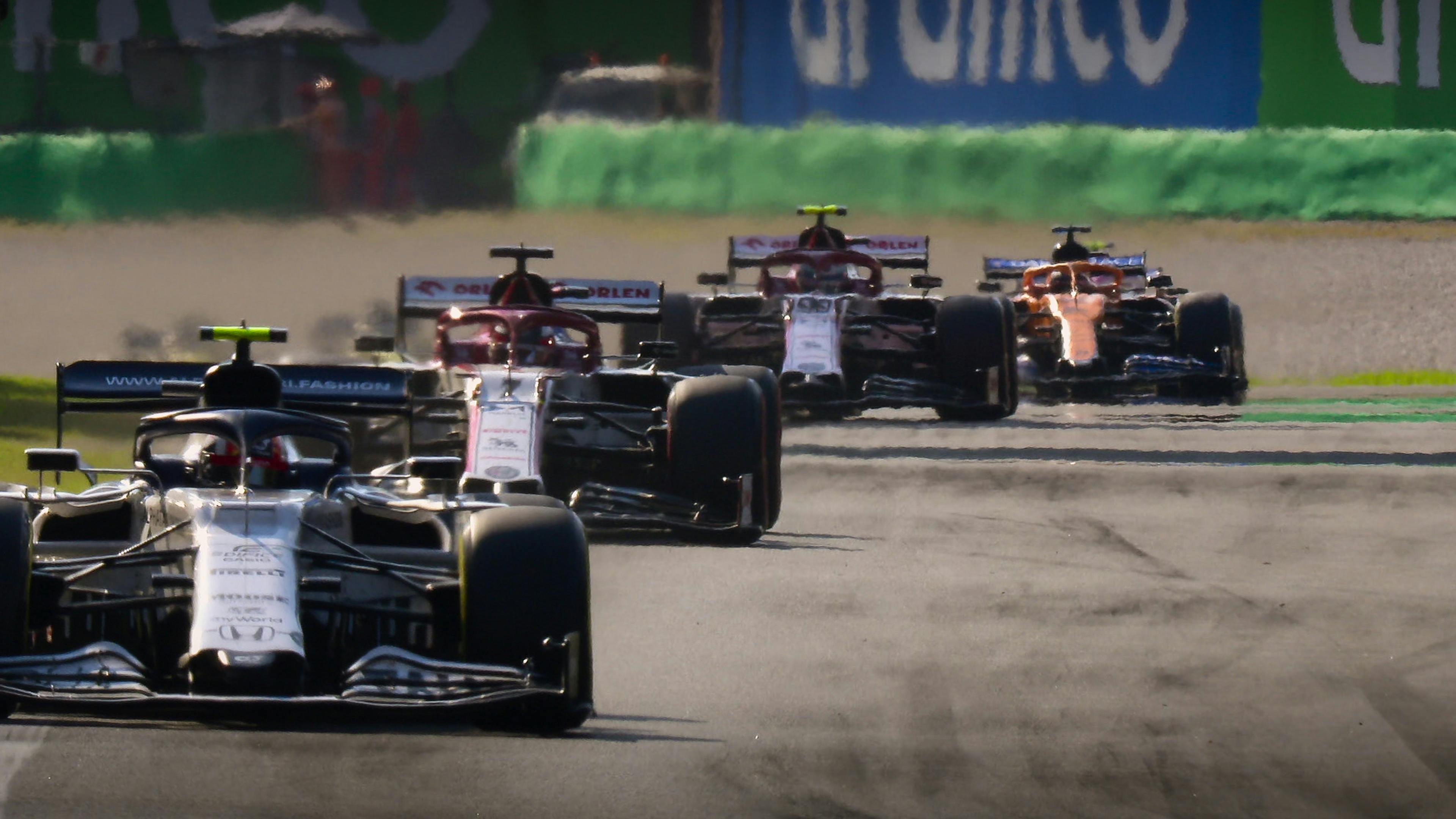Executive producer Paul Martin is in awe of how Drive to Survive has resonated with fans around the world.
When producer Paul Martin takes on any project, his goal is to amplify his subject in the grandest way possible. Even given his penchant for beautifully shot sports documentaries — Diego Maradona, Make Us Dream, The Three Kings — no barometer could have gauged the impact Formula 1: Drive to Survive would have on Formula 1 racing when it debuted in March of 2019, particularly in the United States where interest in the sport was lukewarm, to put things politely.
The popular docuseries has given viewers a behind-the-scenes look into the world of Formula 1, highlighting compelling storylines around the teams, drivers, and the pressures of each race. While there are purists that claim Drive To Survive is ruining the sport, increasing global buzz around the last few seasons speaks to the impact of the series. Last year’s controversial season of Drive to Survive was the most watched yet, and ESPN’s Formula 1 viewership is up 56% from 2020. “Given that the bar was relatively low with the buy-in from fans in the U.S., to see where it is now is phenomenal,” Martin says. “It’s slightly overwhelming at times because the moment you talk about Formula 1 or that you’re involved in Drive To Survive, people just want to talk about it. It’s incredible!”
Martin recently spoke with Christopher Cason about the storylines and challenges of the newest season, why Drive to Survive has resonated so well in the U.S., and his working relationship with co-executive producer James Gay-Rees.

Formula 1 drivers
Queue: What was the most challenging part of putting together Season 4 of Drive to Survive?
Paul Martin: I think the most challenging part is never taking the access for granted. It’s very easy to pat yourself on the back and feel like because we’ve done this for four years, we’re going to get better access. It doesn’t work like that. Formula 1 is, and continues to be, a high-pressure and high-stakes environment. The fact that they let us in and give us anything at all, we’re grateful for. We always talk to our crews about never being complacent with the access. You have to continue to work on those relationships every single day and treat every time you walk into a garage as your first time. If we started to put the wrong foot forward, that access could disappear. The moment any of the teams feel like participating in the show and allowing our cameras in is a hindrance to their day job — which is to win races, points, money, championships — we would be out of there. We don’t ever lose sight of that.
In each season, there are stories that present themselves organically, but how do you and your crew decide on some of the additional storylines to highlight?
PM: Every year, we sit down, and we have a pretty good radar for what can potentially happen. If you take someone like George [Russell]; you knew that it was going to be a big year for him and what he did next. We knew that Valtteri [Bottas’] contract was up at the end of the year. We knew that George was making so much noise at Williams and was making it very difficult for Mercedes to ignore him. We knew that whatever way that ends up — whether Valtteri stays, or George ends up getting the spot — that’s a story. You go into a season knowing that’s a possible episode. You then become dependent on what happens on the track. So, it’s a lot of just sitting around and talking about "what ifs" and then, as the races and events happen, the "what ifs" become, This is what happened. Our teams spend a lot of time speaking about Formula 1 drivers, the politics, what’s going on, little tidbits you hear in the paddock. Almost right until we lock the episodes, we’re continuing to tinker with it and finding the right balance of story for us.
I believe the rise in interest of Formula 1 in the U.S. goes hand in hand with Drive To Survive. In your opinion, why do you think it’s resonated so much when we have the four major pro sports leagues and Nascar?
PM: Honestly, I think if we could answer that, we’d be farther than we are [laughs]. At the heart of it is an incredible, high-stake sport that looks and is sexy. There’s something inherently sexy about fast cars and driving them at high speeds. We’ve always seen that. It’s not unique to Formula 1. It’s just something that resonates with people. Then, when you add the additional layer of that “soap opera” of the paddock — I think there are just so many entry points into a show like Drive To Survive. You can watch it and just enjoy seeing the cars going fast and crashing. If you have no interest in sports, but you love soap operas, there are enough soap opera characters in [the show]. Some of it is part travel show because it [takes place in] 21 countries. There are so many entry points into it, and I don’t think everyone comes to [the show] for the same reason or gets the same thing out of it that the next person does. You can like different things and still find something to enjoy about watching it, even if you have never seen a race or are a diehard Formula 1 fan.

In a sport that moves very fast, can you take me through your visual approach to mixing in the drama behind the scenes as well as the action on the track?
PM: I don’t think James and I necessarily see ourselves as documentary makers. We want everything we do to feel big, be elevated, [like] a movie. The story has to be the starting point, and it always is, but to tell that story in the most elevated and creative way that you can is what drives us. Although a story goes from A to B, sometimes you have to crank that journey up as big and as loudly as you can. We’re not afraid to go big on story and drama because if the foundation is there, then those stories can take the drama and that’s what we’re drawn to.
How is the working dynamic between you and James?
PM: We work together in a pretty natural way. Across everything that we do, I don’t think we’ve ever had a conversation like, “You do this, I’ll do that. You’re good at this, I’m good at that.” Everything kind of naturally shakes out. It’s sort of an unwritten way of working where we know James will be stronger at dealing with a particular element and I’ll be stronger at dealing with another element. We’re very honest with each other, and it works very well. We continue to do a bit of everything, but we work in a way which I think compliments each other and we never really step on each other’s toes, which is great.
What can fans expect to see from Season 4, and how do you see the series developing going forward?
PM: You’re obviously going to be on the inside of the Mercedes/Red Bull fight right to the bitter end. I think people are going to see how much of a toll it took on everyone involved and on the sport as a whole, really. To have a season like that, that went to the last lap of the last race — whatever you think of how it ended, it was pretty extraordinary. You’ll see that this sport isn’t easy, and it takes an emotional, physical, and mental toll on everyone. I think people are going to see a bit of [Haas Team Principal] Guenther [Steiner], who they love. Guenther just continues to generate the most amazing stories. Looking ahead, Kevin Magnussen coming back to Haas is incredible. The Yuki [Tsunoda] episode is one of my favorite episodes of the season. It’s a very different tone from the Mercedes and Red Bull fight. I don’t think Drive To Survive is ever 10 episodes about the championship battle — it’s about acknowledging that and the other characters and stories in this world that are just as interesting.
